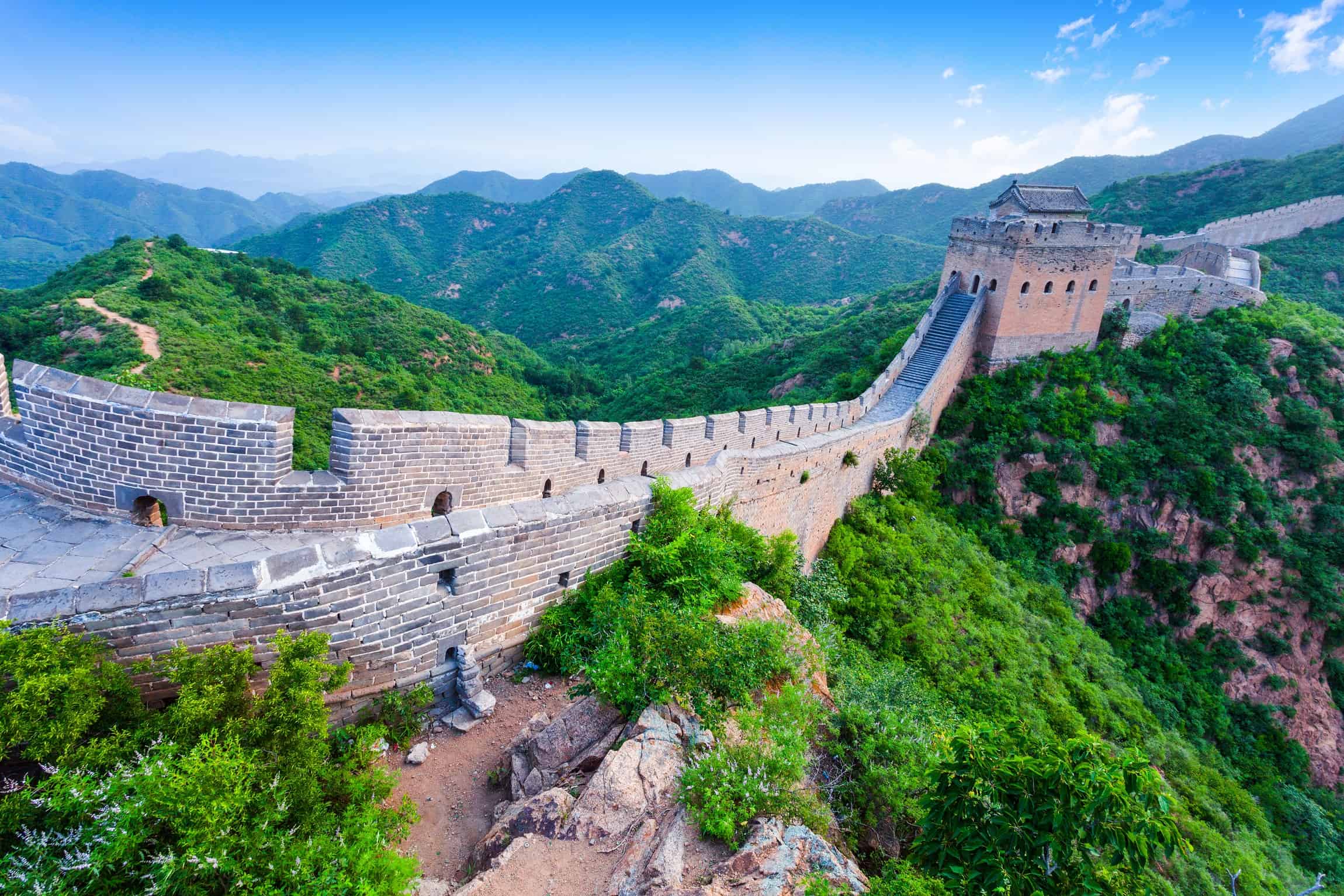The Great Wall of China truly is a marvel to behold. Snaking 8,852 kilometres through China, its sheer scale can't be fully grasped until you've planted two feet on it. In an era when travel destinations and monuments all seem to be enthusiastically heralded, not only does the Great Wall of China live up to the hype, but it exceeds it. Scaling a tower and following the Wall as far as the eye can see is a vision burned into the memories of many.
Beijing is skirted by nearly 500 kilometres of the Wall and serves as the typical jump off point for day tripping travellers. There are ten or so major sections that can be accessed from the capital, but not all are enjoyed equally. Read on for highlights, low lights and tips.
Bad: Badaling
 https://www.flickr.com/photos/xiaming/
https://www.flickr.com/photos/xiaming/
Badaling is the section closest to Beijing, and the best preserved. However, its proximity to the capital (69 kilometres) also means it draws the largest crowds. On a busy day Badaling swells with tourists. At its worst, you may see more of the crowds than the Wall itself. Frustrated travellers find themselves shuffling along and jockeying for positions at the Wall's edge for the best views. Imagine visiting the Great Wall of China and struggling to take an unobstructed photo, let alone enjoy its grandeur. Unless you're on a tight budget, rushed time line or are mobility impaired, opt to visit one of the other 9 or so sections of the Great Wall.
Note: Badaling is the best section for travellers with limited mobility. There are two service elevators (which require a reservation) and a cable car that efficiently whisks visitors from the entrance to the Wall (but that's not to say a queue doesn't form.) Further, there is a large, flat lane for wheelchairs that stretches as far as the third watch tower.
Better: Mutianyu
 https://www.flickr.com/photos/51252776@N04/
https://www.flickr.com/photos/51252776@N04/
Mutianyu section is often recommended as an alternative to Badaling. At a distance of 80 kilometres from Beijing, it's not too much further to go to be rewarded with a little breathing room. Mutianyu is well developed with many vendors and a cable car to transport visitors atop the Wall. This section is lauded for the abundance of surrounding greenery. Over 95% of the land flanking Mutianyu is forested and twenty of the pines are over 300 years old. (If they weren't standing next to the Great Wall of China they would likely draw more attention.) Marked by steep slopes, visitors to Mutianyu should be prepared for an invigorating excursion. Most visitors arrive at this section on organized tours which often make stops at Dingling Tomb and The Jade Factory (insert sales pitch here.)
Best: Jinshanling
Jinshanling section may be 157 kilometres from Beijing, but consider it 157 kilometres away from the capital's smog, and well away from the crowds overwhelming the Badaling section. Visitors will delight in a nearly tourist-free experience where blue skies meet a green rolling landscape. Jinshanling is minimally restored and steep staircases demand a medium level of fitness. The many towers along the section afford sweeping views of the Wall as it snakes into the horizon. Travellers comparing Jinshanling to Mutianyu will enjoy the peacefulness of both sections, but the latter is more commercialized and groomed. Those who have the time to travel 3 hours each way by coach should absolutely dedicate a full day to visiting Jinshanling. Tours usually include a hotel pick up, approximately 4 hours to explore, and a modest meal in Hua Lou Gou village at the Wall's base.
Other Section Highlights
 https://www.flickr.com/photos/kaboem/
https://www.flickr.com/photos/kaboem/
Jiankou - enjoy relative isolation on this unrestored portion. The adventurous visitor can hike the 4 hour, 9 kilometre distance from Jiankou to Mutianyu. Take extra care in wet weather.
Gubekou - those wanting to trek along the Great Wall can hike from Gubekou to Jinshanling. However, it will require navigating around a closed portion of the Wall due to a military area. Research this ahead of time as signage is poor and allow for 3-4 hours.
Huanghuacheng - restored but remote, this section of the Great Wall will require arranging private transport. Hikers will enjoy mountains and lakes as they make their way to Xishuiyu, a 4.5 hour hike.
Tips for visiting the Great Wall of China
Dress in layers, just as you would for any outdoor hike. Remember that the Wall was constructed as a defensive measure and therefore, built along the cusps of mountains. Consequently visitors are fully exposed to the elements and even on sunny days prevailing winds can cause quite a chill.
Charge your camera battery. You'll be taking a lot of pictures!
Pack snacks and water. There are no vendors on the Wall, and few at the entrances of the more remote sections.
Wear sunscreen, even in cloudy conditions.
Bring sturdy footwear. At times, 'walking' the Great Wall of China resembles something closer to climbing or scrambling the Great Wall. Further, unrestored sections may be uneven, have loose bricks or gravel on steeper inclines.
Don't forget to pack some entertainment. Even visiting the Badaling section will take at least 2 hours round trip by private bus. Jinshangling will take 6. Further, Beijing suffers from congestion and rush hour traffic, and late arrivals back to the city are not unheard of.
High heels not advised

Have you visited the Great Wall of China? How was it?
Leave me a comment below or better yet, tweet me
Related content on Canadian Traveller


